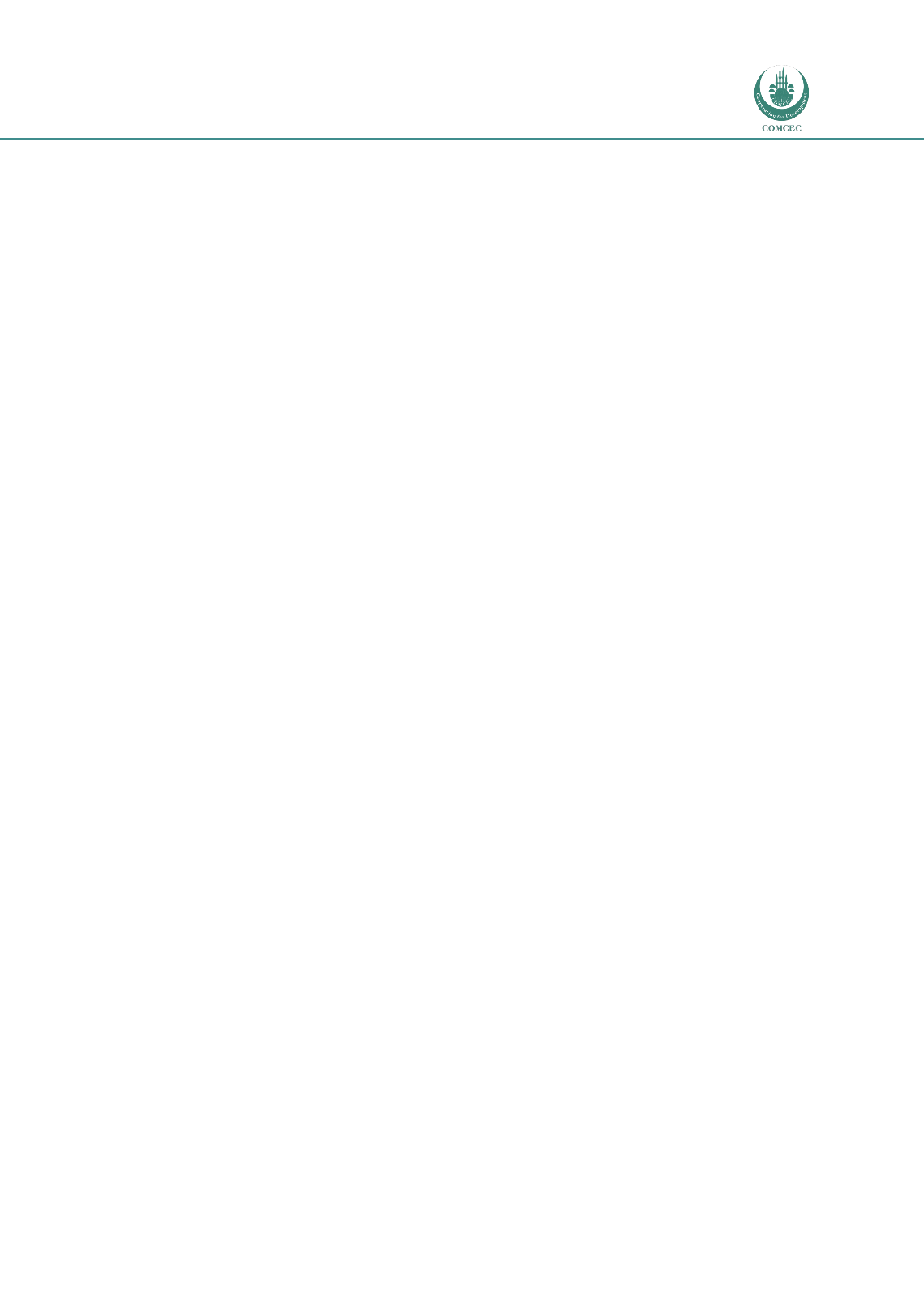

Promoting Agricultural Value Chains
In the OIC Member Countries
105
neighbouring India, but lower than in many other cotton growing countries, such as China, the
USA, Turkey and Brazil (IndexMundi, 2015). Due to the low yields, highly fluctuating
production and increased domestic use, Pakistan has become a net importer of cotton lint
(Nazli, 2010).
5.6.1
Institutional framework and public policy
The cotton and textile sectors in Pakistan have long been subject to strong state intervention.
In 1974, the Pakistani Government established the Cotton Export Corporation which had a
monopoly on cotton trade until the late 1980s when the private sector was once again allowed
to buy cotton from ginners and export cotton or sell it domestically. During the period of state
control, export taxes and domestic price policies kept cotton prices in Pakistan below world
market prices by as much as one third (Salam, 2008). While this ensured the availability of
low-cost cotton to the domestic processing industries, the policy led to low prices for cotton
growers and exporters (Cororaton & Orden, 2007). The price management system finally
broke down in the mid-1990s and domestic cotton prices quickly aligned with international
market prices. Subsequently, the Pakistani government implemented far-reaching reforms to
increase private sector involvement and reduced its own role to the annual review of the
support prices of seed cotton and limited public sector procurements to maintain it (Salam,
2008).
Nevertheless, due to the high importance of cotton for the national economy, the Government
continues to actively support cotton production, processing and textile manufacturing,
including short-term interventions if necessary. In September 2014, the Government
announced a cotton intervention price much above the prevailing market price to procure up
to one million bales through the state-controlled Trading Corporation of Pakistan (TCP), as
market prices had plummeted due to increased cotton imports from India which threatened to
lower domestic production. However, as the TCP only purchased ten percent of the declared
amount of cotton, the programme had little effect on the market and did not increase revenues
for farmers (USDA, 2015).
More generally, since the 2000s the Government has taken various policy initiatives to boost
the cotton and textile sectors, including the establishment of a separate Ministry of Textile and
the implementation of a free trade policy for cotton with no quantitative restrictions on
imports or exports. Until 2009, the Annual Trade Policy was the main policy document for the
cotton and textile sectors. Since then the Government issues a comprehensive Textile Policy for
periods of five years, the most recent being the 2014-2019 Textile Policy, announced in 2012.
The policy addresses the complete cotton and textile value chains, and aims to develop the
industry by focusing on increasing the value added in the country, enhancing productivity and
improving quality. Concrete goals include the doubling of value addition from US$ 1 billion per
million bales to US$ 2 billion within five years, the doubling of textile exports from US$ 13
million per annum to US$ 26 billion, and to facilitate additional investments of US$ 5 billion in
machinery and technology (Government of Pakistan, 2015).
Other recent key Government documents include the Cotton Vision 2005 and Cotton Vision
2015, which are not official policy documents but represent coordinated efforts of sector
development. Cotton Vision 2015, for instance, aimed to boost cotton production from about
12 million bales in 2010 to 19.1 million bales of cotton by 2015 through increases in the area
under production and enhanced productivity. While this target seems to not have been met, as

















